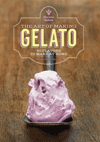MilkPEP will focus on milk’s protein advantage

Protein Fight Club is a new MilkPEP campaign that compares milk’s nutrient content to other breakfast foods.
Each 8-ounce glass of milk has 8 grams of high-quality protein. That may not be a shocking new fact to all of us in the dairy industry, but recent Milk Processor Education Program (MilkPEP) research suggests that it just might be one of the industry’s best-kept secrets — and it could be the key to increasing milk sales.
While milk has always been a natural source of protein in the American diet, today protein is climbing the charts as one of the most sought after attributes in the food industry. Nearly 60% of Americans consider protein when purchasing packaged foods and beverages, and the majority are trying to get more in their diet, according to an International Food Information Council survey.
In the first four months of 2013, 6.3% of new U.S. food and non-alcohol beverage products have made a high-protein claim, compared to 4.6% in 2012, according to Datamonitor Consumer’s Product Launch Analytics database. The products range from bars and cereal to smoothies and pizza.
Protein from milk is affordable
While the food industry continues to add protein to many different food categories, the dairy industry has a unique opportunity to communicate what’s always been in milk — high-quality protein, even more than in an egg. In fact, milk protein is a complete protein, compared to many plant proteins sources that are missing some of the building blocks the human body needs. Milk is a convenient, great-tasting and affordable source of protein.
And breakfast, in particular, may hold a unique opportunity for the dairy industry to communicate about protein and milk’s protein advantage. Experts recommend including 20 to 30 grams (0.7 to 1 ounce) of protein at each meal rather than in one large amount, but adults are getting only 10 to 12 grams of protein at breakfast.
MilkPEP continues its long-term focus on breakfast, and if we take this message to a broader target, recent research conducted for MilkPEP by New York-based ExactCast estimates a potential incremental volume as high as 500 million gallons, which could mean as much as an 18% increase in breakfast-at-home volume and an 8.2% increase in total milk volume. ExactCast is a joint venture of the political polling firm Whitman Insight Strategies and the ad agency Protagonist.
Simply sharing the “new” news of milk’s protein could have huge potential to positively impact milk consumption, according to this recent work from ExactCast. Insights that could ultimately drive a turnaround in milk consumption were identified through ExactCast’s tried-and-true technique, called behavioral segmentation, which politicians have used for decades. By looking at targets, messaging and outlets, our research told us to:
- Go broad. Broaden milk’s target beyond moms to capture more of the breakfast opportunity.
- Make it newsworthy. Deliver news to motivate behavior change among “Base” and “Swing” (our long-standing milk fans and potential fans, respectively).
- Put protein on top. Drill down to specific reasons to believe in the benefits of milk, with protein at the top.
- Be aggressive. Get more competitive on nutrition compared to other breakfast beverages, like orange juice.
A bold new focus on protein
If you watched the Super Bowl and our first-ever Super Bowl TV commercial earlier this year, you saw the start of milk’s protein messaging (“Protein to start your day”) along with over 100 million other consumers on the biggest ad day of the year. In MilkPEP print advertising, Dwayne Johnson, aka The Rock, reminded Americans that milk has “protein to save the day” and Katie Couric shared her “protein power breakfast.”
Now, to educate consumers on milk’s high-quality protein, MilkPEP, with our agency Deutsch N.Y., developed a new campaign to spotlight the 8 grams of protein in each 8-ounce serving. The Protein Fight Club campaign puts the spotlight on protein by depicting milk in a series of humorous breakfast battles that showcase how its protein stacks up against the competition and can help win each day. The campaign:
- Shows milk “behaving” in a new way, shifting from “passive caregiver” to “active hero.”
- Shouts out the “new” news that milk has high-quality protein.
- Moves milk to center stage with breakthrough and unexpected creative.
- Broadens milk’s appeal at breakfast, challenging the “only for kids” perception.
- Will create “buzz” and talk about milk and milk’s protein.
Both entertaining and unforgettable, the video vignettes produced by film director Eric Wareheim will live on television and online and will be featured on www.ProteinFightClub.com. Vignettes feature
milk going head-to-head with some of breakfast’s biggest contenders, including orange juice, an omelet, a breakfast burrito and a bagel with cream cheese.
Accompanying the videos will be:
- Powerful in-store messaging about the superiority of milk’s protein.
- Consumer promotion to engage consumers to make the swap to milk in the morning.
- New milk protein-focused assets to use on-package and in retail circulars.
- Online activations and social content, all related to Protein Fight Club.
- High-profile national events to put the spotlight on milk as the best source of protein in the morning.
Visit MilkPEP.org for more information on how milk processors can get involved.
Motivating change
MilkPEP is confident that with the right message, the highest-opportunity target and a highly focused approach, the industry can help motivate change and drive sales. We’ve seen some preliminary signs that our approach can make a difference and we’re looking forward to sharing more good news as we continue to target the 500 million gallon breakfast-at-home opportunity.
Julia Kadison is the vice president of marketing for MilkPEP, Washington, D.C.
Looking for a reprint of this article?
From high-res PDFs to custom plaques, order your copy today!








